3D Character Creation
Class 12: AnimationTopics
- Character Animation
- Class 12 Lab
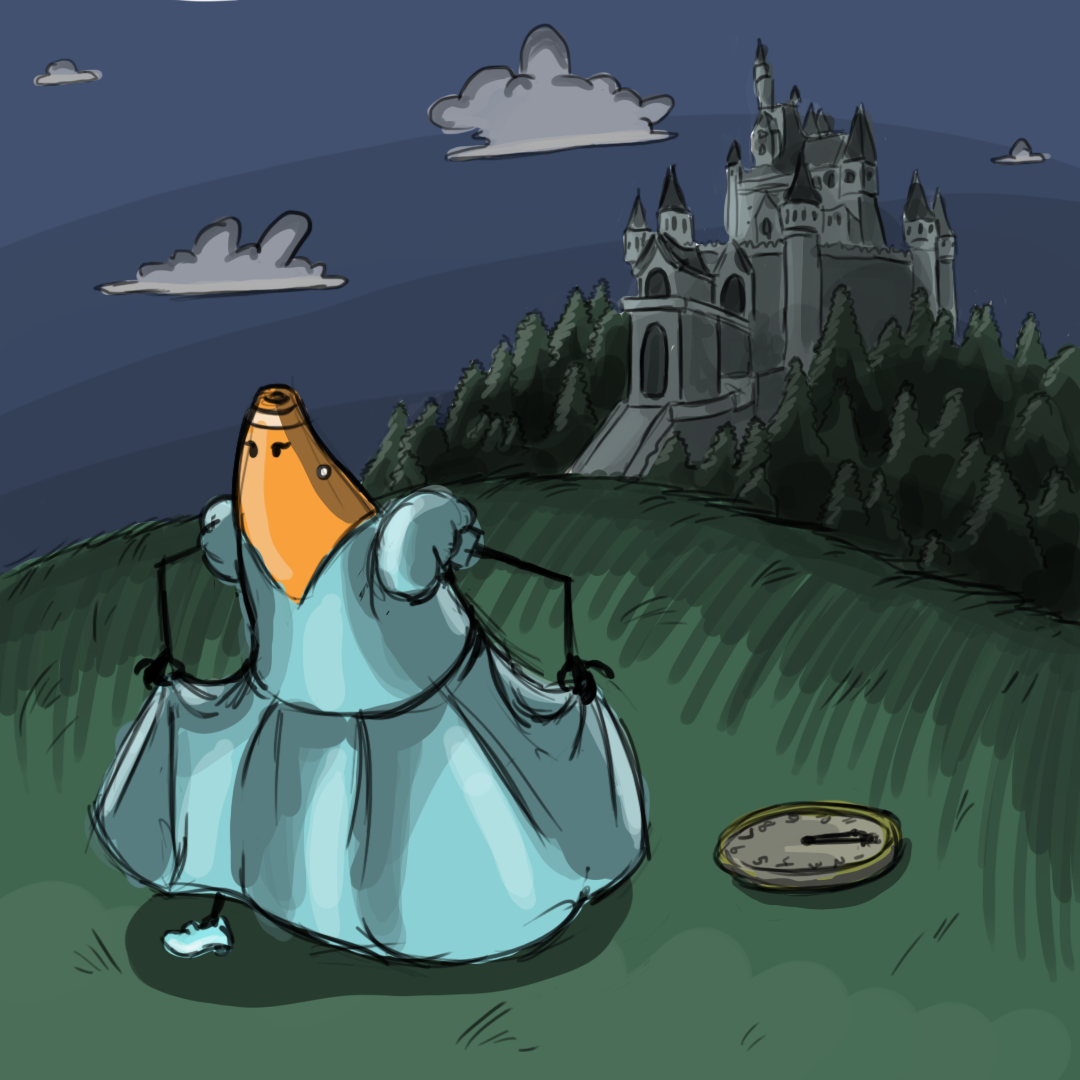
Hurry it’s class 12
Character Animation
Pose Design:
The most important aspect of an animated performance is the pose design.
Story is not most important element! Character is! Without emotive characters we don’t care about their stories. The only way the audience connects to the character is through the character’s posing.
The pose reveals the character through appeal and emotion.
- Appeal: allow the audience to easily access the soul of the character for a quick understanding of what the character is feeling.
- Emotion: clearly express the true feels in the heart of the character for that given moment.

Good Pose Design:
- Good Poses allow the audience to see inside the character’s soul. Pose is the reaction to the characters thought.
- You want the audience to “feel” the body language, but not focus on it. It is like sound effects, without them it seems wrong but you are never saying “that was an awesome sound!”
- There should be a visual flow that leads the audience to the focus of the scene.
- Good poses instantly communicate character.
- Each pose should have the ability to work as a single frame illustration.
Framing:
The first thing when deciding on pose design is to think about the framing of the shot. Generally speaking you should use the background to frame your characters.
- Make sure your backgrounds are not distracting but supporting your characters.
- These go from shot to shot of Jack. Even in a difficult medium like stop-motion the composition is very controlled.
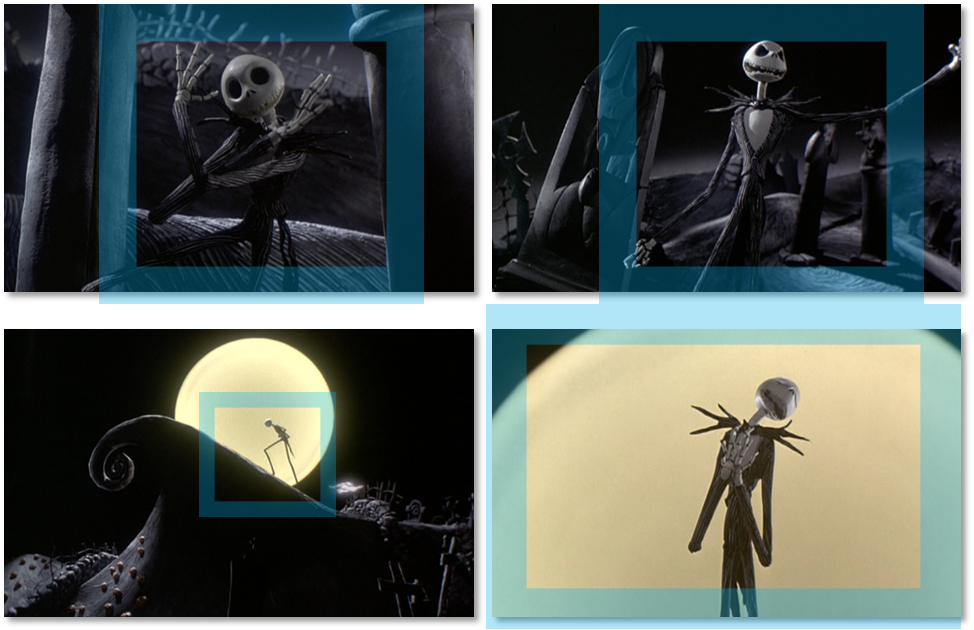
Silhouette:
When viewing an object the first thing a person sees is the silhouette. Then the eye will scan the interior of the shape.
- Look for abstract shapes to create direction, tension, emotion, etc.
- Clearly dug forms a triangle to point.
- You can see dug’s change of emotion as well as the tension when the frame is pushed
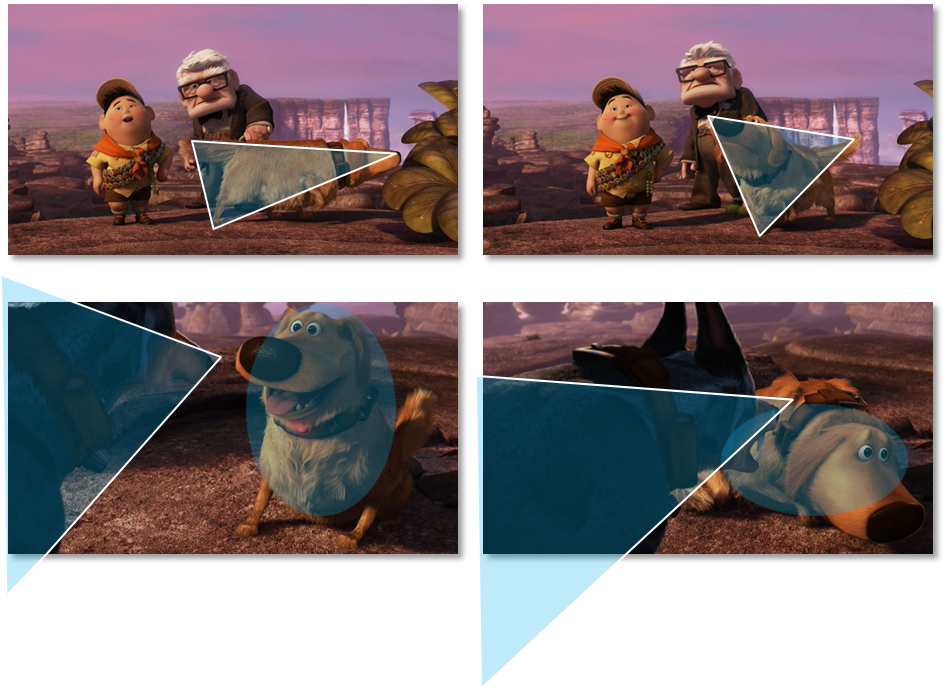
Line of Action:
The line of action is an imaginary line through the character’s body that shows the primary force of a pose, indicating direction and energy (kinetic or stored) of the character’s pose.
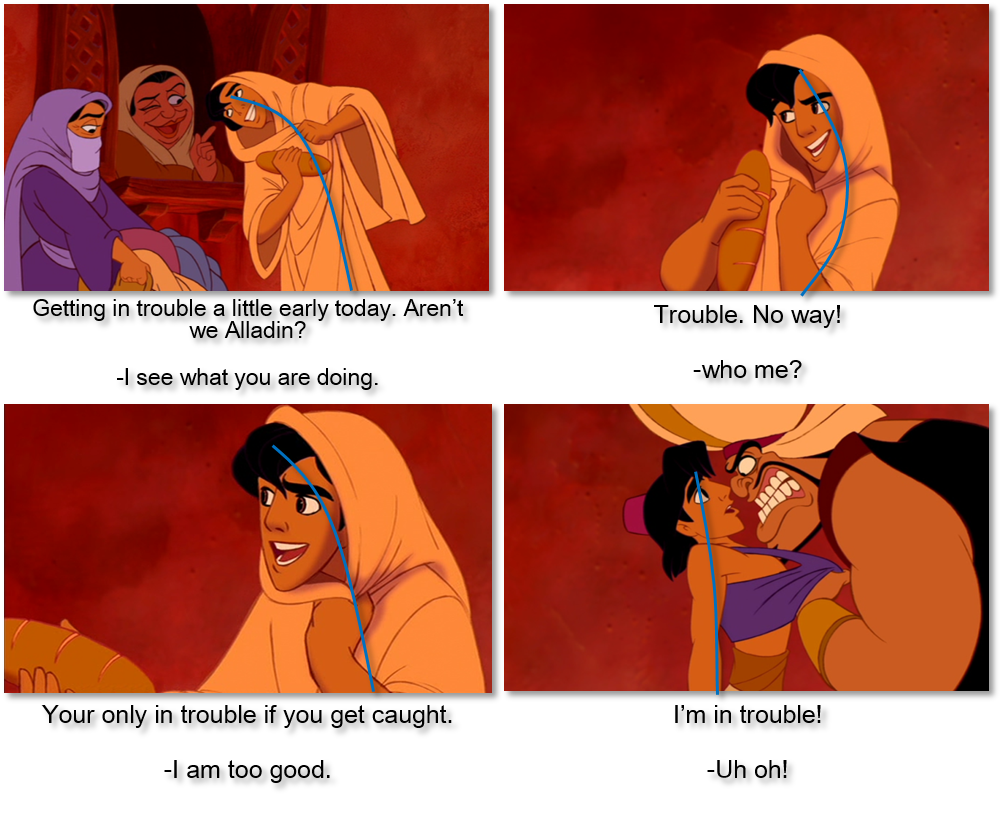
Accenting Flow Lines:
These are secondary lines that help direct the eye to the area of emphasis. It is very often directing towards the eyes.
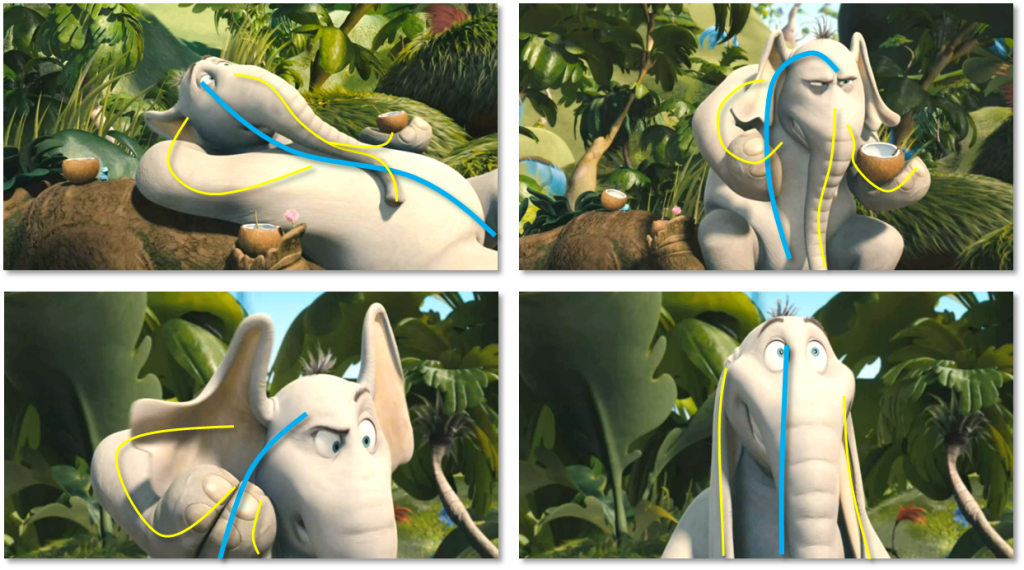
Eye Line:
The eye line is extremely strong.
Notice in these how your eye moves around the composition.
Also notice where the father is always looking. Why?
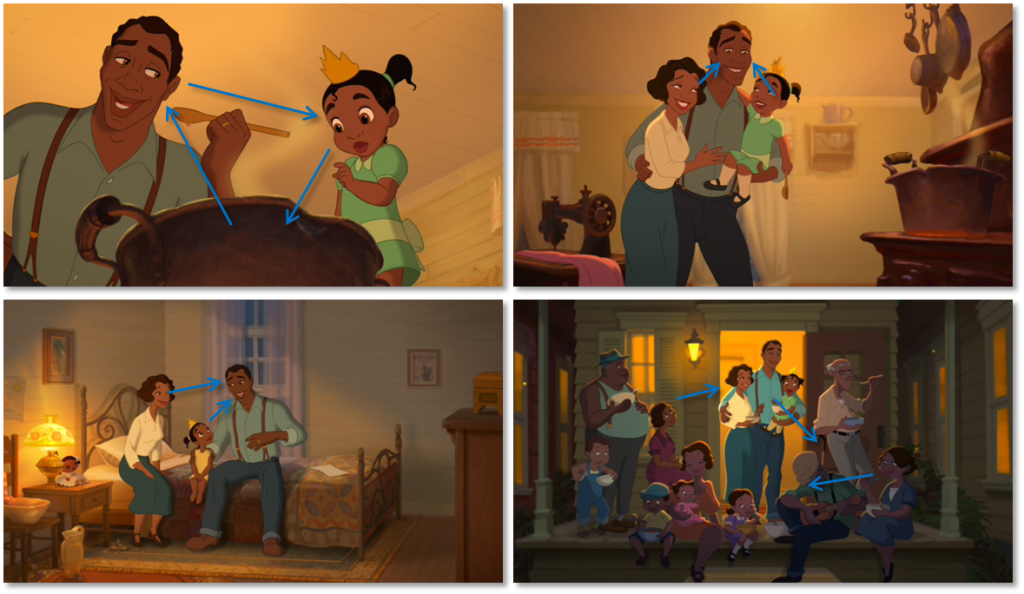
Variety & Contrast in Poses:
Reverse lines of action and accenting flow lines where possible. This shows build up and release of energy.
Vary the intensities of your poses and lines of action. If everything is loud nothing is. Decide on your key story-telling pose, that should be the strongest.
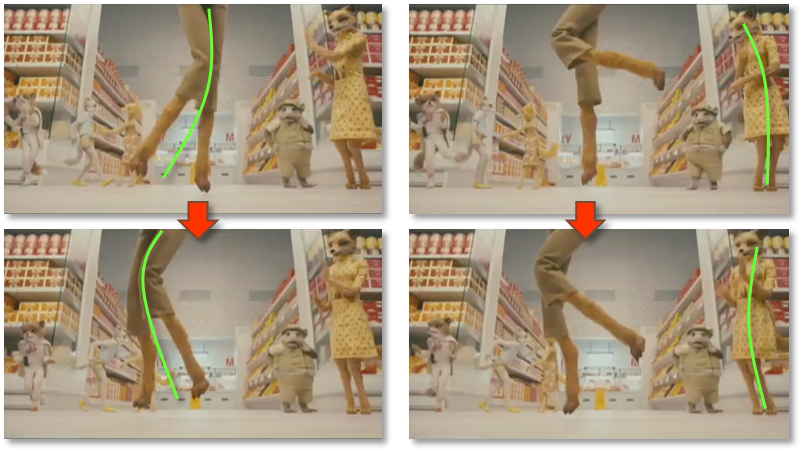
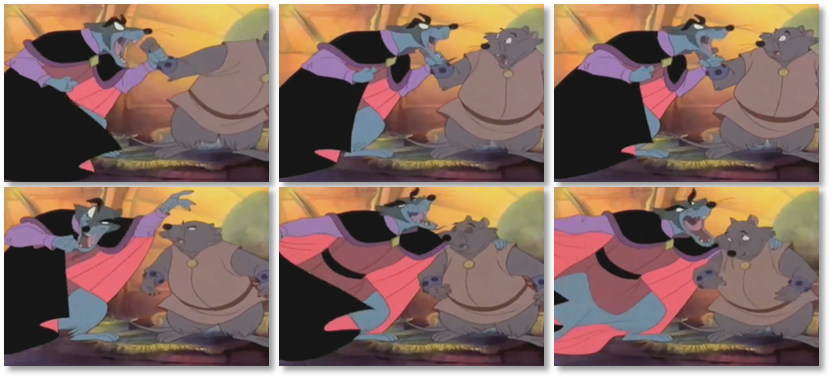
Be careful about using too much contrast. Don Bluth’s animation exaggerates too often and too even.
Straight and Curves in Poses:
You should use both straight and curves in both character outlines, as well as internal primary & secondary lines of action.
- Do not create curves more complicated than ‘C’ or ‘S.’
- The more eccentric the arc the larger the energy potential.
- Vertical lines of action, when contrasted against other strong directional lines are like exclamation points. Use for emphasis.
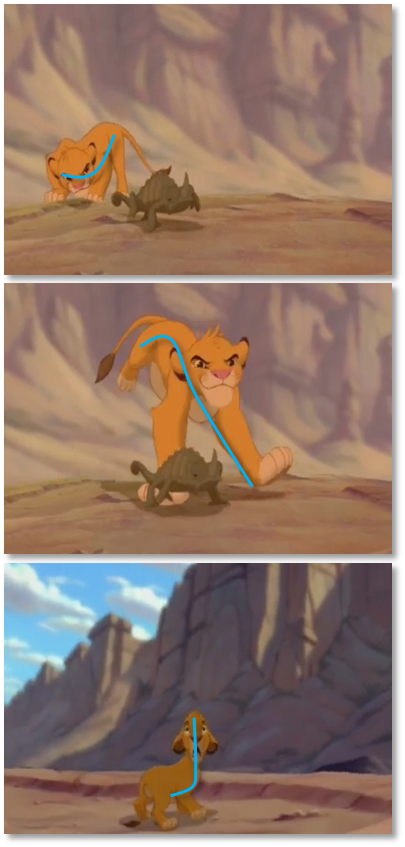
Simple vs. Complex:
Producing asymmetry in a pose is important to create appeal. One way to achieve this is to include simple forms against complex ones. Simple versus complex involves creating more texture on one side and less on the other.
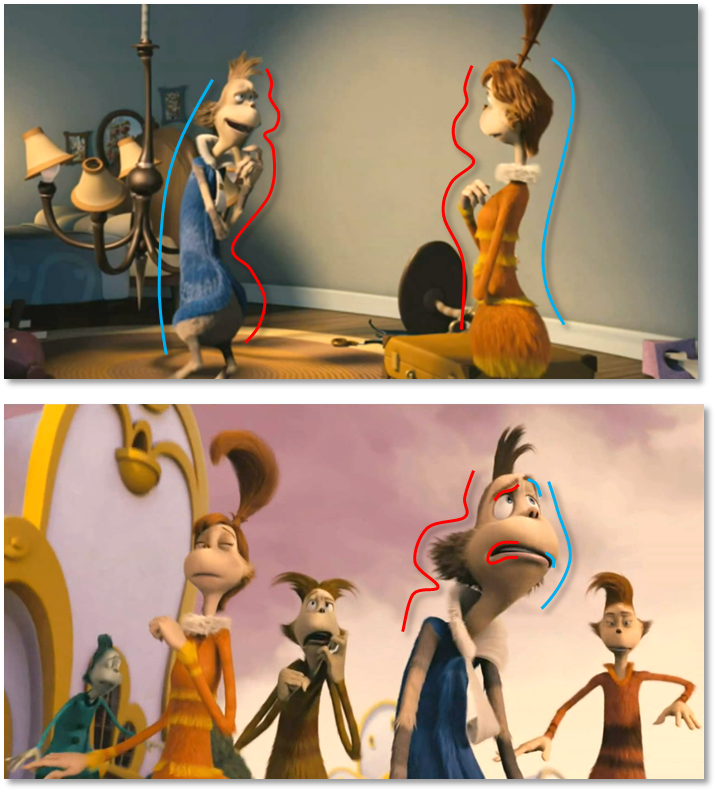
Weight:
You want your poses to hold weight. Remember characters are generally a series of scaffolding supporting the body.
These will help force you to create better poses:
- Create a twist in the pose to create a less symmetrical design.
- Use head tilts. We do not naturally keep our heads straight. Good indicator of attitude and emotion.
- Create an uneven distribution of weight for better posing. Shift hips and feet around.
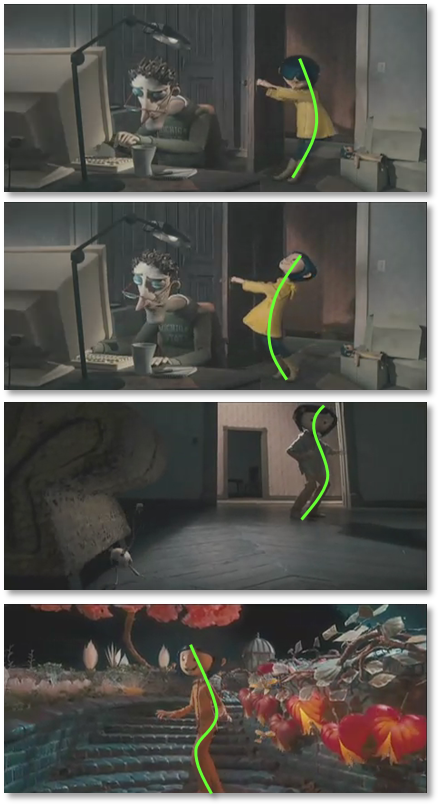
Character:
Do not simply go for what looks good. Go for what is right based on the emotion.
Each character will pose differently.
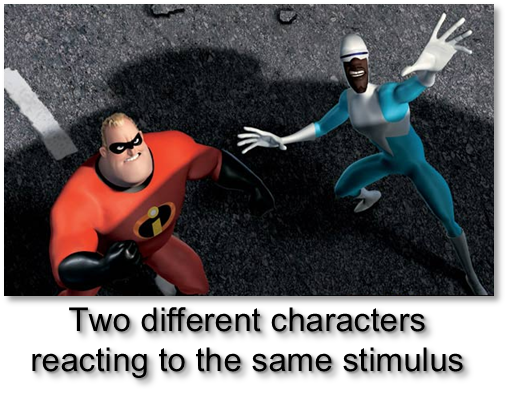
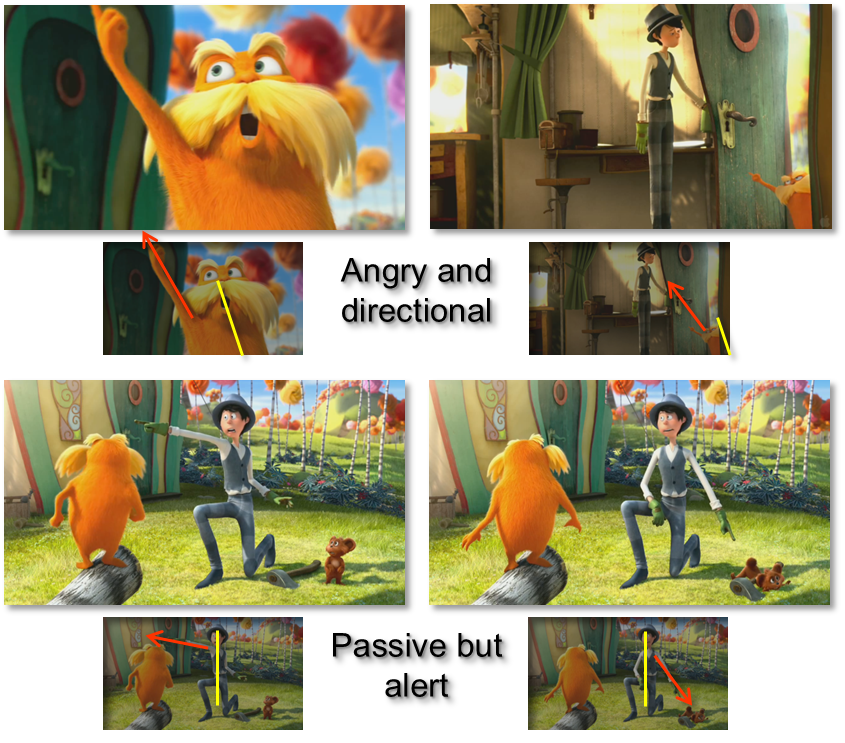
Resources:
Here are some excellent papers and articles on pose design that are an interesting read:
Class 12 Lab
Animation Lab
Once your rig is complete you can animate. In this lab you will create a basic motion to both test the rig as well as a warm up.
You will be graded on the following:
- Lab Requirements
-
Techniques and processes covered in the instructional material is followed and implemented.
-
- Creativity & Craftsmanship
-
Excellent design choices, novel & appealing, and solid clean caliber work.
-
Resources:
- Assignment Video Tutorials
- You may watch the tutorial videos below to help you complete your assignment.
Wait! Before you go!
Did you remember to?
- Read through this webpage
- Submit Class 12 Animation Lab on Blackboard

